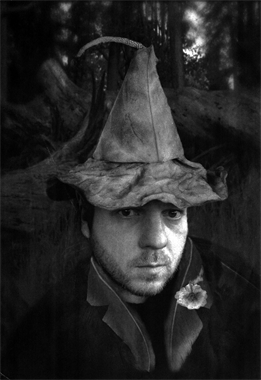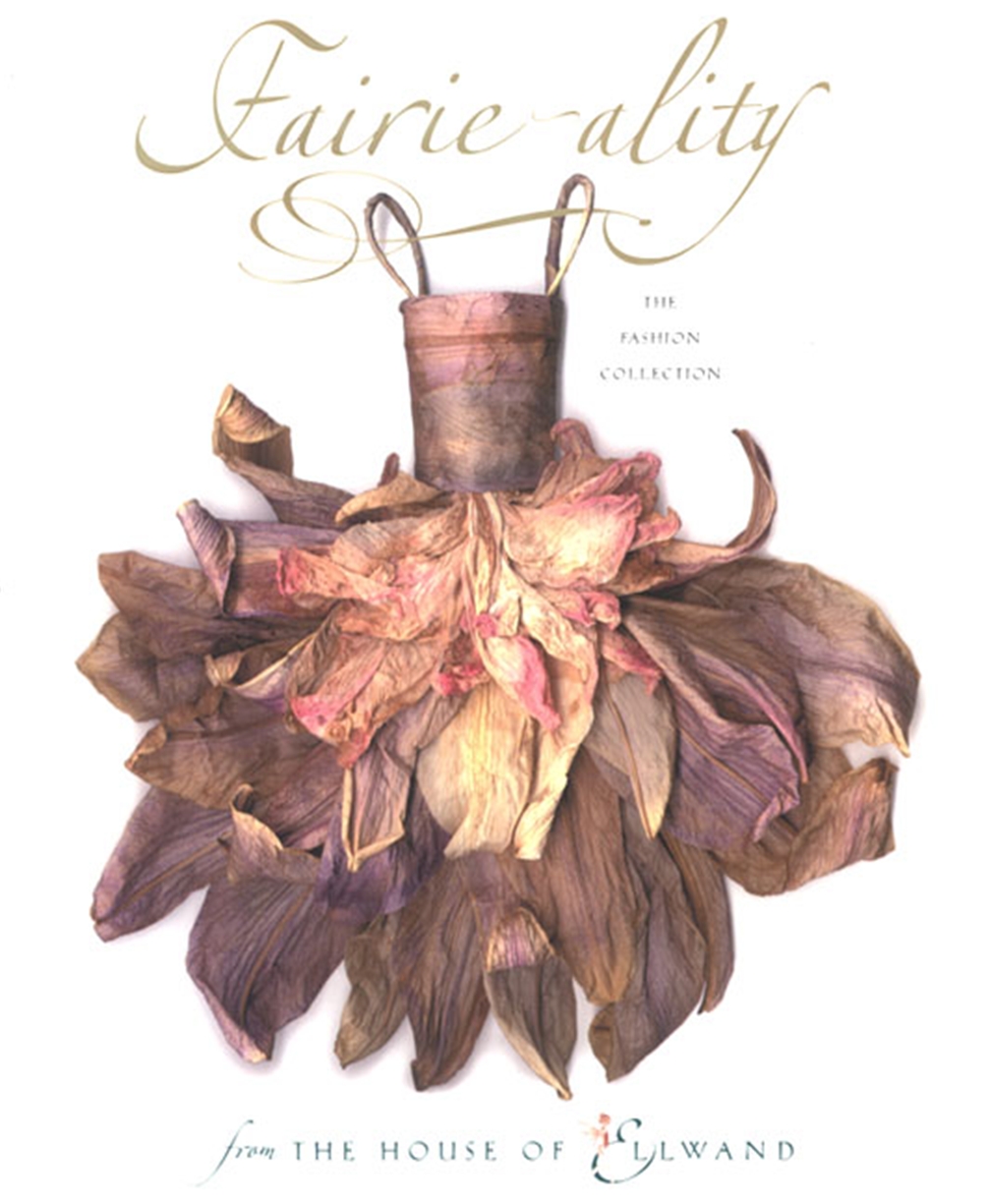
David Ellwand
David Ellwand says he has long been intrigued by folklore and tales of the little people. “I’ve been to a lot of places where folklorists say that fairies have been sighted,” he notes. “Nowadays anything supernatural might be purported to be a UFO, but in Victorian times it would be considered to be a fairie, or a will-o’-the-wisp, or whatever. It’s really quite fascinating.”
Now add to this fascination a painstaking attention to detail and an imagination in permanent overdrive, and you’ll have some sense of what inspired Fairie-Ality: The Fashion Collection from the House of Ellwand. “I’ve worked as a photographer for more than fifteen years and spent a lot of my time photographing flowers,” David Ellwand recalls. “One day, after working with some calla lilies, I left them out without any water. They started to dry naturally, and I noticed how one of them resembled a small silk shirt. I then started to bend and shape the flowers and model them into items of clothing suggested by their organic shapes.” The resulting “fairie clothes,” fashioned as playthings for David Ellwand’s then three-year-old daughter, caught the eye of a visiting editor from Candlewick Press. Before long an exquisitely designed, tongue-in-cheek catalog of fashions for fairies was in full flight.
David Ellwand says that his biggest challenge in hand-crafting designs from flowers, feathers, leaves, grass, shells, and other natural materials is “trying to handle the delicate materials without messing them up.” Through meticulous experimentation, he learned that feathers have a natural flex that creates a perfect loop, flower petals have a natural curl, and lilies especially, when half-dried, can be worked into all sorts of shapes. He also discovered that his diminutive creations need to be photographed instantly before they begin to fade and wither. Reproduced in breathtaking detail, the 150 fashions David Ellwand showcases in Fairie-Ality-dresses, coats, trousers, hats, underthings, and shoes-have grabbed the attention of such fashion moguls as shoe designer Stuart Weitzman, who commissioned eight almost-human-size “fairie” shoes for a window display making the round of his boutiques.
In the singular world of David Ellwand, flowers have taken on a life of their own. Of the enchanting Cinderlily: A Floral Fairy Tale, written by Christine Tagg, he says, “This book is the realization of a vision I had about five years ago, informed by many years of photographing flowers, the continuing use of natural materials in my work, and the marvels of modern computer technology. All the poses are based on actual ballet and gymnastic moves-Cinderlily’s jumps are based on the great Olga Korbut!”
More recently, David Ellwand has turned his camera lens from the delicate beauty of flowers to another natural wonder: the marvelous individuality of babies. Every day in the world, more than 350,000 babies are born. That’s 14,500 per hour, 245 per minute, 4 per second . . . and each one is unique. And never is that miracle portrayed more stunningly than in the luminous photographs of David Ellwand – an infant gazing intently with balled-up fists; tiny toes and fingers as delicate as flowers; a medley of babies’ faces, close up and radiantly expressive. Interspersed with quotes that will resonate with grown-up readers, Baby Unique is sure to fascinate the youngest of listeners, who will see themselves reflected in its enchanting images.
David Ellwand began his career in photography at the age of eighteen and uses a variety of formats and techniques in his books: black-and-white photographs, collage with hand-tinting, and full-color photography of handmade objects. He is also a mouse trainer, sculptor, and highly skilled self-taught computer artist. He lives with his wife and daughter in a village in West Sussex, England.

